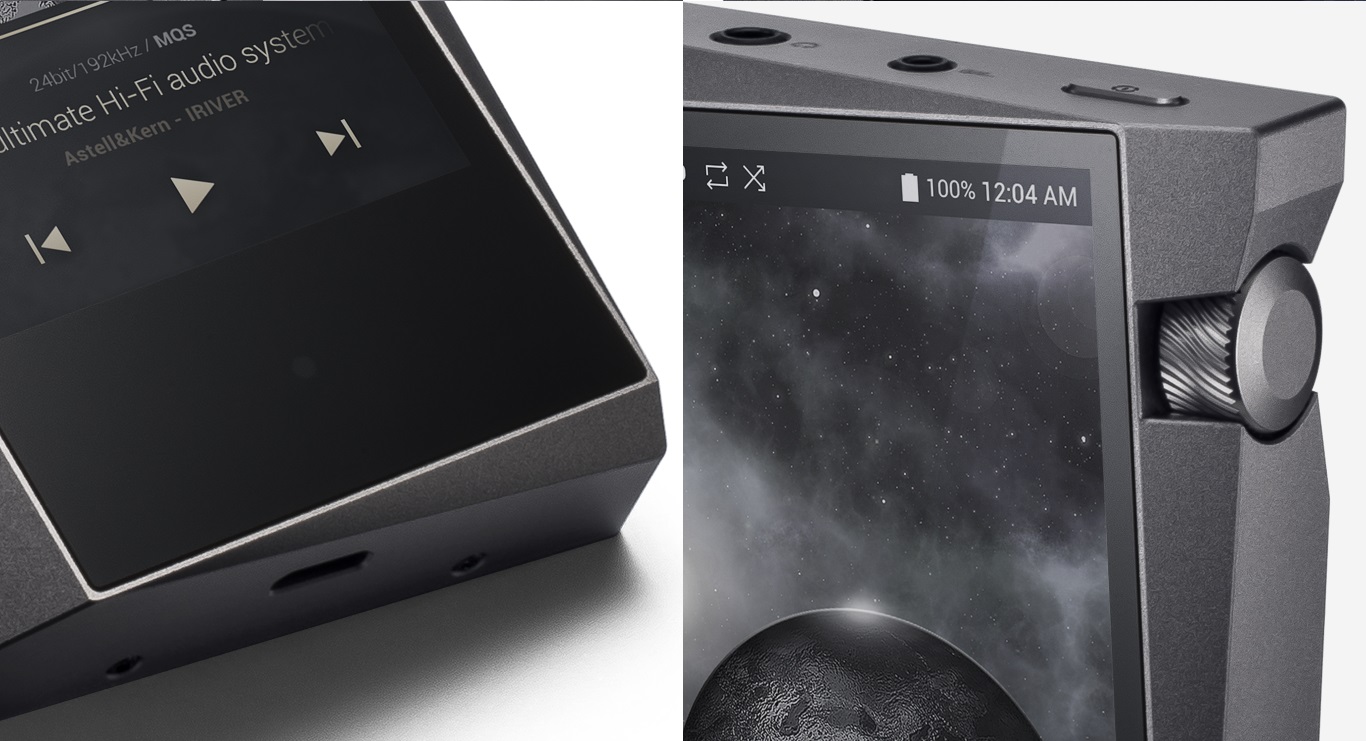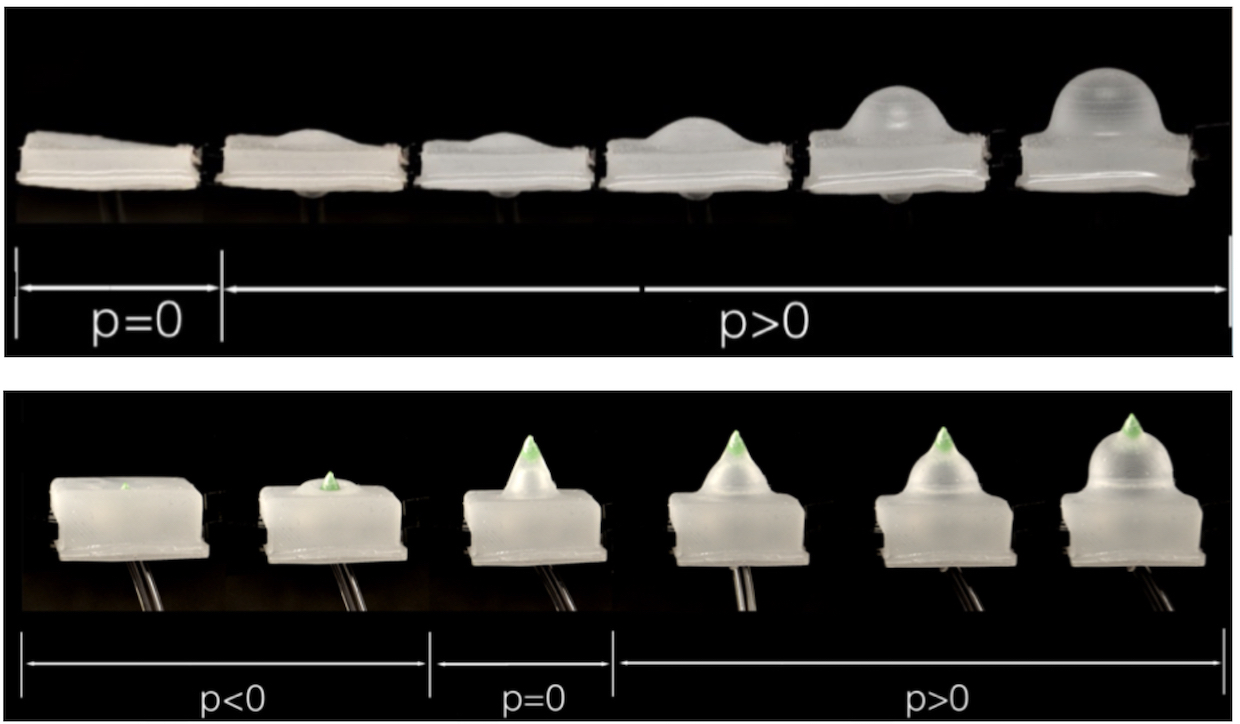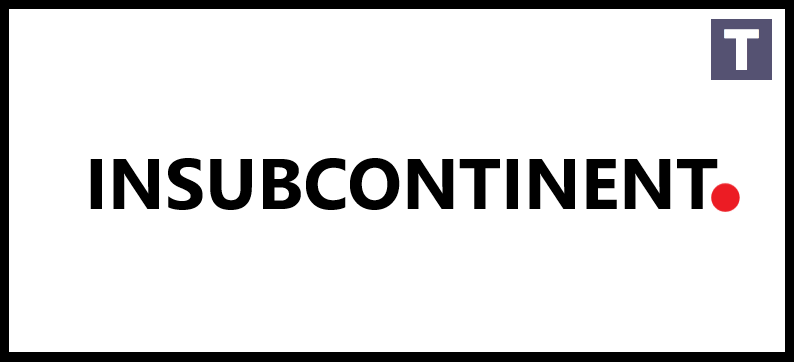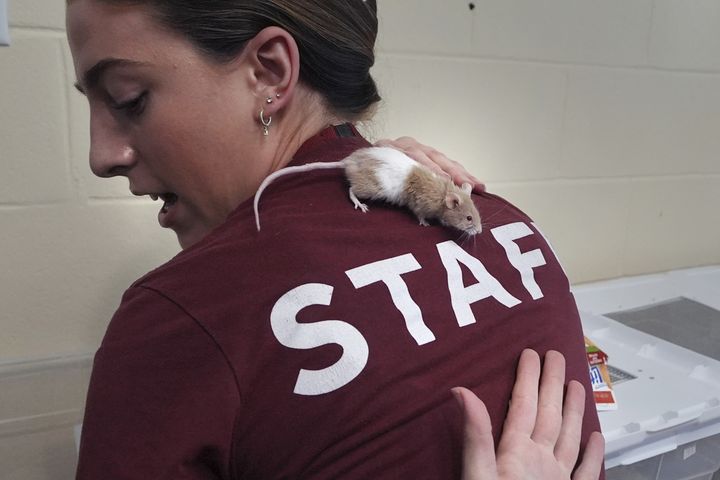Music
Trailers
DailyVideos
India
Pakistan
Afghanistan
Bangladesh
Srilanka
Nepal
Thailand
StockMarket
Business
Technology
Startup
Trending Videos
Coupons
Football
Search
Download App in Playstore
Download App
Best Collections
Technology
It may be old-fashioned, but I find dedicated MP3 players wonderful little devices. I&ve used tons over the years (the Zune HD is still the best) and I&m glad to see they live on in some fashion, even if itas an objet d&art jammed with audiophile knick-knacks and a $700 price tag: Astell-KernA-norma SR15.
Look at that thing! The ground of the tech world is littered with anonymous-looking lozenges made to appeal to as many people as possible. Then you have this thing.
What a design choice, to tilt the screen like that and form the rest of the device from prism-like complementary rectangles! The site even has a &design concept& page, on which it points out that this isn&t a purely aesthetic choice:
The slight angle and precise, mindful alignment show the empty space and tones that fills the space. From any angle, or either hand you hold your device, it does not hinder the display screen and offers the best grip.
Isn&t that wonderful And iteven kind of true! Those areas we so carefully avoid with our fingers or thumbs are now grippable.
 Meanwhile, the tilted screen also makes room for the knurled volume knob, while simultaneously protecting it from unwanted touches. And the angle of the screen makes for a visual hint for the power button.
Meanwhile, the tilted screen also makes room for the knurled volume knob, while simultaneously protecting it from unwanted touches. And the angle of the screen makes for a visual hint for the power button.
I just love how risky this design is, how eye-catching, how simultaneously practical and impractical. We need much more of that in tech. This device has more personality than every iPhone since the 6 — combined.
 Inside is the usual blast of audio jargon: Cirrus Logic Dual DAC, native direct stream digital, 24-bit 192KHz playback, balanced 2.5mm headphone out and a quad-core CPU to support it all. Do you need any of that Probably not, but a few people might, and at least you&ll be sure this thing will play pretty much anything you throw at it and sound great doing so.
Inside is the usual blast of audio jargon: Cirrus Logic Dual DAC, native direct stream digital, 24-bit 192KHz playback, balanced 2.5mm headphone out and a quad-core CPU to support it all. Do you need any of that Probably not, but a few people might, and at least you&ll be sure this thing will play pretty much anything you throw at it and sound great doing so.
I&ve used a few of A-Kprevious products, and can testify that they&re extremely well-built and feel great to use, though the screens are a bit low-resolution and the UI can be lacking. The 3.3-inch screen isn&t going to blow anyone away with its 800×480 resolution, but it should be sharp enough, and the UI got a redo between the devices I&ve used and the SR15. I&m eager to see if itmore fun to use now.
The A-norma SR15 is available now for anyone with a pocket full of money to burn.
- Details
- Category: Technology
Read more: I&m in love with Astell Kerncrooked, beautiful, ridiculously expensive MP3 player
Write comment (97 Comments)Pluralsight priced the shares in its IPO at $15 this afternoon, above its previously set target range of between $12 and $14, and will raise as much as $357 million ahead of its public debut tomorrow morning.
Pluralsight offers software development courses, specifically ones targeting employees that are looking to advance in their careers by acquiring new skills in order to transition to higher-level roles. As knowledge workers become increasingly valuable, especially in larger enterprises with sprawling workforces, companies like Pluralsight have found a sweet spot in building tools that enable companies to help identify talent in their own workforce and train them, rather than have to aggressively search outside the company to satisfy their needs. The company has raised $310.5 million in its IPO, with underwriters having the option to purchase an additional 3.1 million shares and bring that up to $357 million.
The company is one of a continuing wave of enterprise IPOs this year, including multiple successful ones like zScalar and Dropbox — the latter of which was more of a flagship as both a hotly-anticipated one and as a company that possesses a unique business model. But nonetheless, itshown that therean appetite for enterprise startups looking to go public, which offers those companies a way to raise capital in addition to offering their employees liquidity.
Pluralsight will be another of an increasing pack of unicorns in the Utah tech scene that are on their way to going public. Founded in 2004, Pluralsight was largely bootstrapped until its first financing round in 2013 where it raised $27.5 million from Insight Venture Partners. That firm is the companylargest shareholder, and since then Pluralsight has raised nearly $200 million in financing.
Its The companyIPO tomorrow will once again test the appetite for fresh IPOs among public investors. Enterprise companies generally offer a more stable batch for venture portfolios, with predictable and reliable growth that eventually carries it to an IPO with varying levels of success. They&re smaller than blockbuster consumer-ish IPOs, but they are the ones that can provide a stable return for funds like IVP.
- Details
- Category: Technology
Read more: Pluralsight prices its IPO at $15 per share, raising over $300M
Write comment (95 Comments)Next 10 Ventures is a new firm thatraised $50 million to invest in new digital content, and also in new tools and services for the creators of that content.
The firm was founded by Benjamin Grubbs, previously global director of top creator partnerships at YouTube, who also serves as Next 10CEO. Hejoined by COO Paul Condolora, who was formerly co-head of the Harry Potter franchise at Warner Bros., and who was also in charge of digital and consumer products at Cartoon Network and Adult Swim.
Grubbs told me the firmname refers to supporting the next 10 years of a creatorcareer, and that it emerges from conversations he&d been having with successful online creators.
&They ask, ‘How do I take this to the next level'& Grubbs said. &‘I really enjoy what I&m doing, how do I build a career out of this'&
He added that helooking to work with a &diversified mix of creators& — they don&t necessarily need to have a huge following already, but they should have demonstrated that they can produce compelling videos and they should be &really trying to make a long-term career in this space.&
It sounds like Next 10investments will be structured in a number of different ways. In some cases they&ll look like a traditional seed-stage startup investment. In others, the firm will fund its own products and services. And in still others, it will be funding content and partnering with creators.
The firm says itfocused on three broad areas: video content and IP creation, e-commerce and community-based products and services. And there will be a fund focused specifically on creators of educational content.
In fact, Grubbs said one of the big opportunities is bringing more educational content to Asia. He said that as the young people in countries like Indonesia and the Philippines move online, &education content is lacking on the supply side.&
&What we want to do is not just wait for this market to grow up and graduate, but actually … be an active participant,& he said. &The mission of the company is really to enrich and inspire and entertain — and kind of in that order.&
- Details
- Category: Technology
Read more: Former YouTube exec unveils Next 10 Ventures, a $50M fund to back online creators
Write comment (96 Comments)Google is pushing hard on its efforts to build out a deeper enterprise business around Google Cloud, which continues to trail behind AmazonAWS and MicrosoftAzure when it comes to revenues and usage among organizations. In the latest development, Google has picked up Cask Data, a Palo Alto startup that specializes in building solutions to run big data analytics services based on Hadoop.
The news comes less than a week after Google announced the acquisition of Velostrata, a startup from Israel that helps businesses migrate and run data, apps and other IT functions in the cloud and across hybrid environments.
The Cask Data news was quietly made public by the co-founders of the startup,Jonathan Gray and Nitin Motgi, in a blog post on May 14, which also confirmed that the company would continue supporting existing customers and products.
&We will continue to develop and release open source Cask Data Application Platform (CDAP) that makes building and running big data solutions easy for enterprise customers,& the pair write.
CDAP was Caskkey product, and Google will continue to keep it open source, according to a statement from the company confirming the deal with Caskown blog post.
&We&re thrilled to welcome the talented Cask team to Google Cloud, and are excited to work together to help make developers more productive with our data processing services both in the cloud and on-premise,& said William Vambenepe, group product manager for Google Cloud in the statement. &We are committed to open source, and look forward to driving the CDAP projectgrowth within the broader developer community.&
We have also followed up with Google directly, and a company spokesperson echoed the same. &We can confirm thatCaskData has joined Google Cloud,& she said.
Notably, neither Cask nor Google described the deal as an &acquisition,& and Google didn&t respond to our question asking about this directly. But from CaskFAQ, it sounds like at least a portion of its 55 staff, and Caskproducts and customers, are part of the deal.
Financial terms are not being disclosed. Cask Data had raised around $40 million in funding to date, according to PitchBook, with a long list of big-name investors, including Andreessen Horowitz, AME Cloud Ventures, Battery Ventures, Cloudera, Data Collective, Ericsson and Ignition Venture Partners. PitchBookrecords indicate that Ignition sold its stake on April 25, which might have been when the deal closed. The most recent valuation noted in PitchBook was for $57 million, back in 2015.
Cask doesn&t provide an extensive list of customers— the only two mentioned on its site are Thomson Reuters and data management platform provider Lotame — but it outlines several ways in which itworking with companies today, which provides a rough idea of what it might be continuing to develop at Google.
Hadoop is a key framework used to build big data analytics services and for helping manage large troves of data across multiple locations. Cask had developed its own layer on top of that to run Hadoop-based deployments more efficiently. Using the CDAP framework, various companies cut down the time to build and process big data analytics jobs covering areas like social media monitoring, streaming, security reporting, migrating and reading large data sets, and more.
Google Cloud is estimated to be a $4 billion business, putting it far behind Amazon and Microsoftcloud services, which respectively are heading to annual revenues of $20 billion and $21 billion. Similarly, it appears to also be trailing behind the two when it comes to enterprise adoption.
In other words, adding more tools such as the ones offered by Cask, as well as picking up more customers, are two routes to giving Google Cloud the touchpoints it needs to expand its business further. And with many enterprises still using on-premise and hybrid architectures, and ever-present opportunities to nab business from rivals with competitive offerings, there is still a lot to play for.
- Details
- Category: Technology
Cornell researchers have made a little robot that can express its emotions through touch, sending out little spikes when itscared or even getting goosebumps to express delight or excitement. The prototype, a cute smiling creature with rubber skin, is designed to test touch as an I/O system for robotic projects.

The robot mimics the skin of octopi which can turn spiky when threatened.
The researchers, Yuhan Hu, Zhengnan Zhao, Abheek Vimal and Guy Hoffman, created the robot to experiment with new methods for robot interaction. They compare the skin to &human goosebumps, cats& neck fur raising, dogs& back hair, the needles of a porcupine, spiking of a blowfish, or a birdruffled feathers.&
&Research in human-robot interaction shows that a robotability to use nonverbal behavior to communicate affects their potential to be useful to people, and can also have psychological effects. Other reasons include that having a robot use nonverbal behaviors can help make it be perceived as more familiar and less machine-like,& the researchers told IEEE Spectrum.
The skin has multiple configurations and is powered by a computer-controlled elastomer that can inflate and deflate on demand. The goosebumps pop up to match the expression on the robotface, allowing humans to better understand what the robot &means& when it raises its little hackles or gets bumpy. I, for one, welcome our bumpy robotic overlords.
- Details
- Category: Technology
Read more: This jolly little robot gets goosebumps
Write comment (97 Comments)Here in the States, ZTE has been content with a kind of quiet success. The Chinese smartphone maker has landed in the top five quarter after quarter (sometimes breaking the top three, according to some analysts), behind household names like Apple, Samsung and LG. Suddenly, however, the company is on everyonelips, from cable news to the presidentTwitter account.
Itthe kind of publicity money can&t buy — but ithappening for one of the worst reasons imaginable. ZTE suddenly finds itself in the eye of a looming trade war between superpowers. Iranian sanctions were violated, fines levied and seven-year international bans were instated.
Itlike a story ripped from the pages of some Cold War thriller, though instead of Jason Bourne, itthat one budget smartphone company that you&ve maybe heard of, who maybe makes that weird Android phone with two screens.
So, how did we get here
ZTE began U.S. operations in 1998, a little over a decade after forming in Shenzhen (and a year after going public in China) as Zhongxing Semiconductor Co., Ltd. The change of name to Zhongxing Telecommunications Equipment reflects the newfound focus for the company, which employees around 75,000 and operates in 160 countries.
While ZTE has flirted with premium and sometimes bizarre devices, in the smartphone world, the company is primarily known for its budget hardware. Itno coincidence that the company was tapped by google to be the first to run Android Oreo Go Edition (nee Android Go). The manufacturer has found particular success in the developing world, while making significant gains in the U.S. by releasing dozens of low-cost devices targeted at prepaid users.
In recent years, however, the company has come under increased scrutiny on two fronts. First, therethe issue of the companyperceived ties to the Chinese government. Itthe same thing thattripped up fellow Chinese handset manufacturer Huawei in its pursuit of the U.S. market.
In Huaweicase, multiple warnings from top U.S. security agencies has severely hobbled any chance of making significant headway in this country. The company kicked off the year with the one-two punch of having AT-T pull out of a deal last minute, only to have Best Buy stop restocking its product on store shelves. ZTE, on the other hand, has run into less headwind there.
In February, top officials at the FBI, CIA and NSA all warned against buying product from both companies over remote surveillance concerns and later ending their sale at military bases. But after making significant inroads through non-contract carriers like Boost, Cricket and Metro PCS, the warnings appear to have had little impact on the company.
The same, however, can&t be said of a seven-year ban.
In 2016, the U.S. Commerce Department found the company guilty of violating U.S. sanctions. The department disclosed internal documents from the company naming &ongoing projects in all five major embargoed countries — Iran, Sudan, North Korea, Syria and Cuba.& Thata big issue when selling a product that contains, by some estimates, a quarter of components created by U.S. companies — not to mention all of the Google software.
The following year, the company pleaded guilt and agreed to a $1.19 billion fine, along with the stipulation that it would punish senior management for the transgression. Last month, however, the DOC said ZTE failed to live up to the latter part of the deal, issuing an even steeper fine as a result.
&ZTE misled the Department of Commerce,& the department said in a statement to TechCrunch at the time. &Instead of reprimanding ZTE staff and senior management, ZTE rewarded them. This egregious behavior cannot be ignored.&
The new punishment bans U.S. component manufacturers from selling to ZTE for seven years. A few days later, the company told TechCrunch that the export ban would &severely impact& its chances of survival. And then, last week, the company ceased major operating activities.
&As a result of the Denial Order, the major operating activities of the company have ceased,& it wrote in an exchange filing. &As of now, the company maintains sufficient cash and strictly adheres to its commercial obligations subject in compliance with laws and regulations.&
In the meantime, the company was reportedly meeting with companies like Google in hopes of figuring out a workaround, while China was said to be meeting with U.S. officials to discuss the steep ban. For some, the ZTE ban was seen as a political move amidst a potential trade war, and a major roadblock toward negotiations.
That leads us to Sunday, when Trump tweeted, &President Xi of China, and I, are working together to give massive Chinese phone company, ZTE, a way to get back into business, fast. Too many jobs in China lost. Commerce Department has been instructed to get it done!&
Job loss in China seems like an odd motivator for any U.S. president, let along Trump, but things make significantly more sense when you consider the sheer size of a company like ZTE. If a U.S. trade ban caused the company to fold, iteasy to see how that could severely impact already tenuous relations between the two countries.
&The Chinese have suggested that ZTE was a show-stopper,& international studies expert Scott Kennedy succinctly told NPR, &if you kill this company, we&re not going to be able to cooperate with you on anything.&
And that brings us to this morning — and other Trump tweet. &The Washington Post and CNN have typically written false stories about our trade negotiations with China,& Trump writes. &Nothing has happened with ZTE except as it pertains to the larger trade deal. Our country has been losing hundreds of billions of dollars a year with China[…]…haven&t even started yet! The U.S. has very little to give, because it has given so much over the years. China has much to give!&
Those tweets, it should be noted, were most likely posted in reaction to bipartisan concern about Trumpfocus. &#China intends to dominate the key industries of the 21st Century not through out innovating us, but by stealing our intellectual property - exploiting our open economy while keeping their own closed,& Marco Rubio tweeted earlier this week. &Why are we helping them achieve this by making a terrible deal on ZTE&
So things are weird. And it2018, so expect that it will only get weirder from here.
- Details
- Category: Technology
Read more: How ZTE became the focal point of US/China relations
Write comment (98 Comments)Page 5362 of 5614

 19
19











